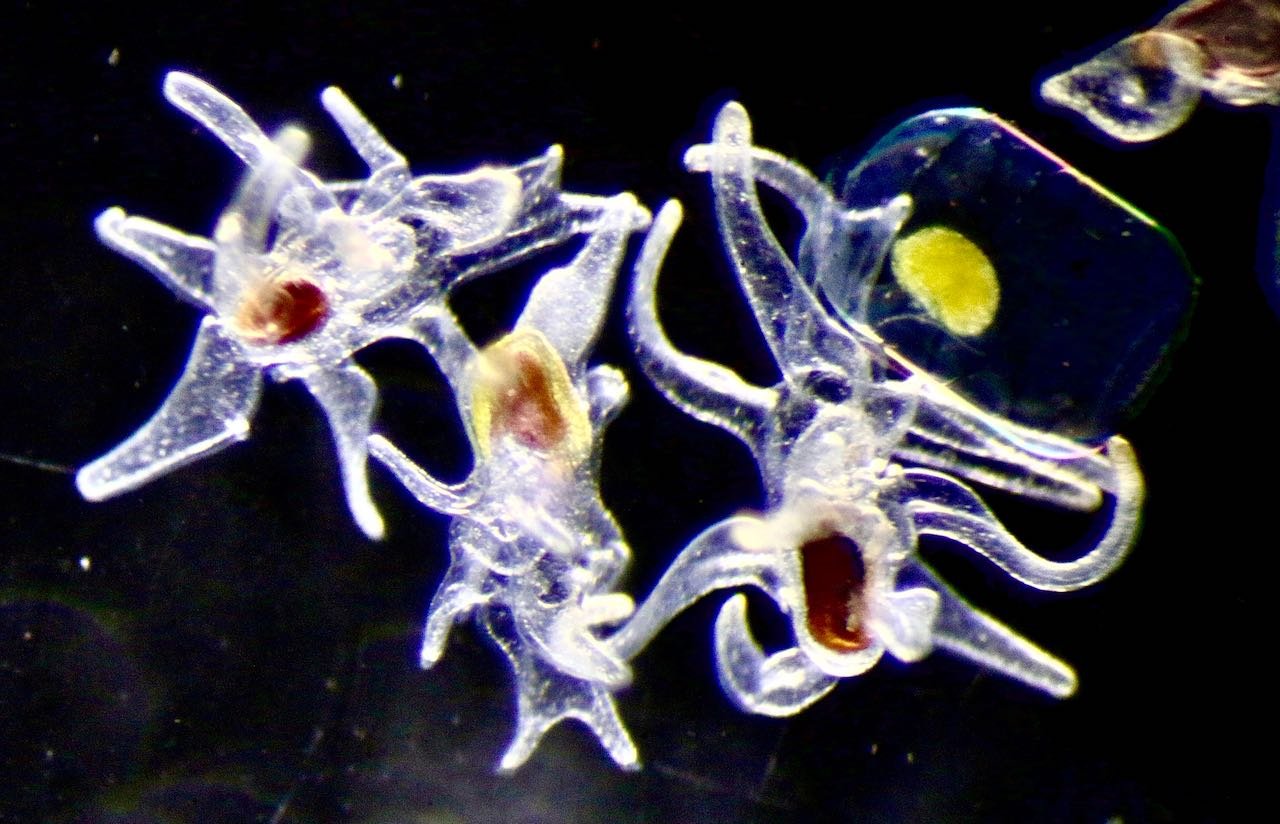Unusual migration paths in the middle of the Atlantic Ocean. Viva la Biodiversidad!
Crossing the Equator. Two weeks passed from seeing any land -this is a Transatlantic sailing. Blue and deep blue is everywhere –to the horizon and deep down. In every direction, there is an apparently low density of any macroscopic life: occasional fishing only and very few seabirds around us. This is a familiar feeling for many sailors and scientists… since Darwin… The serenity and calm in the middle of the Pandemic Fall of 2021.
Yet, Life is blooming. It is blooming in the plankton, an elusive microcosm of tiny drifting organisms, which makes the deep blue ocean a truly astonishing universe for anyone who observes it through a microscope. Every plankton collection that we are taking on board the Vinson brings hundreds of species of algae and animals and, if we also count unicellular and micron-scale creatures, we could identify thousands of species and billions of different viruses. This hidden community produces nearly 50% of oxygen on Earth. That is, every second breath you and everyone on this planet take, consumes oxygen produced by marine plankton!
Arthropod which lives on salps.
By sampling in the middle of the Atlantic, halfway between Africa and South America, we did expect to find a usual textbook diversity of pelagic organisms: from colorful algae (green, yellow, red and brown, diatoms and dinoflagellates) to gracious jellyfishes, highly mobile crustaceans, glorious sea angels, sea devils and many other wondering creatures. But, as usual in biology, we have found wonderful surprises too. Many species collected last week do not match with the classical plankton textbook descriptions, so these findings emphasize the fact that we only know about 10% of the species living in our seas.
Yes, regrettably most of the marine life is still unexplored…even since Darwin. We know more about rocks on the Moon than what is in the Ocean, even though millions of known and unknown small wonders of the Ocean are responsible for the health of our Planet. These organisms are descendants of our common ancestors, who made the Biosphere in the first place, more than 3.5 billion years ago.
Radiolaria
Surprisingly our team found youngsters of true benthic organisms in the middle of the Atlantic: amazing varieties of sea stars, sea cucumbers and hemichordate tornaria larvae, at \~5000 kilometers away from any coast and 4-5 km from the bottom. Adults of these species only live at the seafloor and they are virtually immobile, so how did they end up in our nets?
There are parallels between Darwin’s observations during his voyage in the Beagle more than 180 years ago, and our Atlantic crossing in the Vinson. Far from any island or continent, Darwin noted many examples of land animals that traveled across the seas. He stressed that these “sea-travelers” were responsible for spreading Life over the globe. Such random migrations are powerful ways to conquer the Earth and facilitate the diversification of species. But what about the spreading of truly sessile organisms such as worms or sea cucumbers who spend all their adult life in a small patch of a rock or in the muddy sea floor?
Tornaria, hemichordate larvae
There are only two explanations for our current plankton samples. Either larvae from benthic animals (i) surfaced from 4-5 kilometers below or (ii) they were brought up by oceanic currents. The first option is less likely due to the enormous differences in pressure and temperature between the bottom and the equatorial surface. But the second hypothesis is equally challenging due to the long journey that would be for these tiny larvae.
The genetic analysis of these samples can help uncover the truth. Nowadays, it is possible to molecularly fingerprint each of these “new” larval forms and match their DNA to the already known habitats. The results will determine whether their potential parents live in coastal areas, or whether we have discovered new and enigmatic species from the depths of the ocean. Either way, such findings can be an important step to expand our knowledge about evolution and marine life.
Sea star larvae
Life in our Ocean has its own rules and myriads of ways to control the Global Climate, and we still do not know its surveying and migration strategies. Planktonic wonders (known and unknown) are the most powerful buffer for many harmful human activities. They are invisible doctors that keep our planet healthy for the next generations and during the current OGAP, and in our current Vinson of Antarctica voyage we are trying to learn a bit more about them, just as Darwin did.
Viva la Biodiversidad!
Images 1, 2, 3 & 4: Examples of species collected during the plankton sampling at the Equator. By Leonid L. Moroz.
Leonid L. Moroz (University of Florida)
Daria Romanova (Russian Academy of Sciences)
Instagram: @OGAP @dy\_romanova






